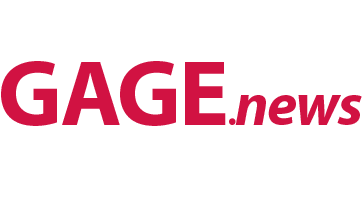- Employers can match your student loan payments with contributions to your 401(k) retirement plan thanks to the SECURE 2.0 Act.
- The IRS gave interim guidance for matching contributions for qualified student loan repayments (QSLP) in 2024.
- The new law helps employees balance saving for retirement with paying off student loan debt.
Thanks to a relatively new law, you may be able to pay down your existing student loan debt while boosting your retirement savings. This allowance comes from the SECURE 2.0 Act, passed under the Biden administration in 2022. The law's 401(k) student loan match program helps U.S. workers at participating employers avoid the dilemma of trying to grow a nest egg for the future while paying down student loans now.
Many of the best retirement plans provide employer-match benefits for participating employees. Employer matches for qualifying student loan payments have the same eligibility and vesting rules as standard employer match contributions.
While these student loan matches are relatively new, and it may take time for more employers to offer them, they can be very helpful to your future finances. Here's what you need to know.
What is a 401(k) student loan match?
Definition and overview of 401(k) student loan match
The 401(k) student loan match is a program implemented as part of the SECURE 2.0 Act, where employers can put an equivalent amount of an employee's student loan payments into the employer's retirement plan. The Act was passed in 2022, but the student loan match — more broadly called the Qualified Student Loan Payment match program since it applies to more than just 401(ks) — went into effect for plan years starting after December 31, 2023.
With a student loan-retirement match, employers can treat loan payments as qualifying contributions toward 401(k)s, 403(b)s, and similar retirement saving plans. Like a regular 401(k) match, a student loan match is treated using the same formula as contributions from your paycheck.
For example, if your employer's policy matches your 401(k) paycheck contribution dollar for dollar up to the first 5% of your salary, the same applies to the 401(k) student loan payment match. That way, employees don't face as much of a hard choice between paying down student loans or saving for retirement. Instead, they can make student loan payments while getting a retirement boost from their employer match.
Importance of matching student loans
Saving money and eliminating debt are building blocks for establishing long-term wealth in the U.S. However, many workers have been drowning under high interest rates, hefty education costs, and persistent inflation. As such, many young employees struggle to balance the cost of living while paying down debt and saving for retirement.
The Education Data Initiative found that student loan debt in the U.S. totals $1.777 trillion as of March 2025. Nearly 43 million U.S. workers carry federal student loan debt, with the average federal student loan balance being $$38,375. And when you add in private loans, the average potentially climbs to $41,618.
"Student loan debt can be a significant drain on household income, shifting resources away from basic necessities, retirement savings, and other goals such as purchasing a home," says Teresa Greenip, CFP, senior manager in wealth management and partner at Aspiriant.
The 401(k) student loan payment match program offers a new solution: Award employees with retirement money to encourage them to pay down student loan debt.
Considerations for 401(k) student loan matches
Matching contributions from an employer often have vesting requirements, such as up to five years, depending on the plan. If you leave your current place of employment — or get laid off before your money is fully vested — you'll lose some or all of the non-vested money from your employer.
So, if the only money in your account is from employer-match contributions, you run the risk of having no retirement savings, thereby losing the benefit of QSLP matches.
How does a 401(k) student loan match work?
Under the student loan-retirement matching program, businesses can match contributions, generally up to a certain percentage of the employee's salary, when an employee makes a qualifying student loan payment to their employer-sponsored 401(k), 403(b), 457, or SIMPLE IRA account.
The maximum amount depends on the type of plan, but there's one combined limit whether an employer is matching retirement contributions or student loan payments. For example, for 2025, the maximum combined match for a 401(k) plan is $23,500, unless the employee earns less than that.
Rather than depositing a portion of your paycheck in your 401(k) to max out your employer match — essentially earning you free money — you'll get the same employer match benefit when you make a qualifying student loan payment. A matching contribution is one of the most powerful retirement savings benefits for workers to grow long-lasting wealth, as it's essentially free money from your employer. If you don't contribute enough to your retirement plan — or in this case, make enough student loan payments — to maximize the match, you're leaving money on the table.
Remember, 401(k) student loan matches are required to adhere to the same match percentage, eligibility, and vesting rules as salary deferrals, although the frequency of matches can differ. In other words, an employer can't match retirement contributions up to 10% of your salary but only match 5% of student loan payments. The rules have to be the same.
Any employer offering qualifying plans can provide a 401(k) student loan match as an employee benefit. If you're interested in receiving this benefit at your current job, consider contacting your employer's HR to inform them of this new opportunity. It could be as easy as sending an email.
Benefits of a 401(k) student loan match
Relieves financial strain on employees
Many U.S. employees struggle to repay their student loan debt, while often neglecting to contribute regularly to their workplace retirement plans and sacrificing the additional benefit of employer-matching contributions. By forgoing their 401(k) or other retirement plans, employees also miss out on years of tax-deferred or tax-free growth.
The Secure Act 2.0 relieves some employees of this financial strain by allowing them to earn free retirement money when they make qualifying student loan payments.
"Eliminating student loan debt can benefit the economy by shifting household resources from debt repayment to investment and spending, as well as increased personal productivity," explains Greenip.
Helps employers attract and retain talent
A retirement plan like a 401(k) is a common benefit sought by workers. Although not all workplaces offer employer-matching contributions, businesses that do generally have an easier time attracting and retaining talented employees.
A 401(k) match on student loans and regular salary deferrals (i.e., the retirement contributions that come out of your paycheck) appeals to U.S. workers looking to get the best of both worlds. Moreover, employees may be more motivated to stay until the funds in their retirement plan are fully vested (e.g., three to five years).
Student loan 401(k) match requirements
Initially, the IRS provided little guidance on the program, including what was considered a "qualifying" student loan payment and how employers were expected to track and authorize their employees' student loan contributions.
"Employee deferrals to retirement plans are administered by employers themselves, so it's relatively easy to track contributions," Greenip explains. "Since employers do not track student loan repayments, this adds a layer of complexity and administrative support that will be needed to offer the benefit."
On August 19, 2024, however, the IRS issued interim guidance on 401(k) student loan matches, specifically on Section 110 of the SECURE 2.0 Act that applies to QSLPs.
Here are the guidelines:
Who qualifies for a 401(k) student loan match?
- Retirement plans that qualify for a student loan employer match are 401(k)s, 403(b)s, SIMPLE IRAs, and government 457(b)s.
- The IRS defines qualified student loan payments (QSLPs) as payments made by an employee to a qualifying student loan belonging to the employee, the employee's spouse, or a dependent. The employee must also be legally obligated to make student loan payments.
- Student loan cosigners aren't the primary borrowers. Therefore, they are only eligible for a 401(k) student loan match if they are the ones making the payments.
- All employees who qualify to receive regular employer-sponsored matches are eligible for student loan matches. The frequency of matching contributions can differ from regular employer-match contributions but must be at least once per year.
Guidance for retirement plan providers
- Loan repayments made by an employee count toward the annual limit on elective deferrals.
- Retirement plan providers cannot include provisions that limit student loan matches to only certain types of education loans. All employees are eligible to receive matching contributions on qualifying student loan payments regardless of loan type, attendance at a particular school, or a specific degree program. However, a plan may include features only applicable to non-union employees.
- Qualified student loan payments made in previous plan years do not qualify for a student loan match in the current plan year.
- Plan providers can establish one or multiple student loan claim deadlines each plan year for employees to make match submissions.
Employers must annually provide retirement plan providers with:
- The amount of the loan payment
- The date of the loan payment
- Proof that the employee made the loan payment
- Proof that the loan is a qualified student loan
- Proof that the employee incurred the loan
Start investing
FAQs on 401(k) student loan match
What is the Secure 2.0 Act 401(k) student loan match?
The Secure 2.0 Act 401(k) student loan match is a program that allows employers to make matching contributions to employees' retirement plans after those employees make a qualifying student loan payment. It is one of many provisions implemented by Secure 2.0 to help Americans prepare for retirement.
How does Secure 2.0 affect employees?
One of the major ways this law affects employees is through the Secure 2.0 student loan match program, which allows U.S. workers to pay off student loans while still earning employer-match contributions within their tax-advantaged retirement plan. The law also affects several other areas of retirement benefits, such as requiring automatic enrollment of eligible employees in 401(k) and 403(b) plans.
Can an employer pay off an employee's student loan?
Yes. Employers are able to pay up to $5,250 per year of an employee's student loan through the CARES Act, a Covid-era law, with this student loan provision set to expire at the end of 2025. Similarly, companies can offer a student loan employer match benefit, which allows employees to earn a matching contribution to a qualifying retirement savings plan after they make a qualified student loan payment.
The post What is a 401(k) student loan match? How to save for retirement with qualifying student loan payments appeared first on Business Insider


